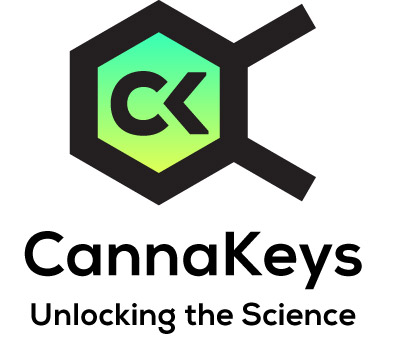Fatty Acid Amide Hydrolase (FAAH) Research Dashboard
What am I missing as a non-subscriber?
To see a full dashboard with study details and filtering, go to our DEMO page.
As a subscriber, you will be able to access dashboard insights including chemotype overviews and dosing summaries for medical conditions and organ system and receptor breakdowns for cannabinoid and terpene searches. Study lists present important guidance including dosing and chemotype information with the ability to drill down to the published material. And all outputs are fully filterable, to help find just the information you need. Stay up-to-date with the science of cannabis and the endocannabinoid system with CannaKeys.
CannaKeys has 401 studies associated with Fatty Acid Amide Hydrolase (FAAH).
Here is a small sampling of Fatty Acid Amide Hydrolase (FAAH) studies by title:
- Metabolic dysfunction contributes to mood disorders after traumatic brain injury
- Chemical Probes for Investigating the Endocannabinoid System
- The endocannabinoid system and ophthalmic pathologies: a review of molecular mechanisms and its implications for clinical practice
- Bovine Colostrum Increases Intestinal Permeability in Healthy Athletes and Patients: A Meta-Analysis of Randomized Clinical Trials
- Endocannabinoid Hydrolase Inhibitors: Potential Novel Anxiolytic Drugs
Components of the Fatty Acid Amide Hydrolase (FAAH) Research Dashboard
- Top medical conditions associated with Fatty Acid Amide Hydrolase (FAAH)
- Proven effects in clinical trials for Fatty Acid Amide Hydrolase (FAAH)
- Receptors associated with Fatty Acid Amide Hydrolase (FAAH)
- Individual study details for Fatty Acid Amide Hydrolase (FAAH)
Ready to become a subscriber? Go to our PRICING page.
Page Quick Links
Select New Cannabinoid
Overview - Fatty Acid Amide Hydrolase (FAAH)
Description of Fatty Acid Amide Hydrolase (FAAH)
The naturally occurring enzyme fatty-acid amide hydrolase (FAAH) was discovered in the late nineties (B. Cravat 1996) and is one of the primary compounds responsible for metabolizing (breaking down) bioactive fatty acid amides such as the endocannabinoid anandamide (AEA) to their corresponding acids, thus terminating the signaling functions of these molecules.
The enzyme is primarily found in cells of the central nervous system and, to a lesser degree, in the periphery.
It exists in two forms, FAAH1 and FAAH2 (B. Q. Wei et al., 2006)
FAAH2 was found in several mammalian species but not in all, such as rats and mice, which may account for the often paradoxical results found between animals and human studies testing for the analgesic effects of FAAH inhibitors (B. Q. Wei et al., 2006)
FAAH plays a significant regulatory role within the endocannabinoid system (ECS) that has potential relevance in the clinical setting, modulating mood (e.g., stress, anxiety), energy metabolism, appetite, pain, inflammatory processes, or neurodegeneration, and as such, may benefit many of the conditions that share one or more of these underlying pathologies). Furthermore, several animal trials have shown efficacy in the treatment of different types of pain. As a result, inhibitors of FAAH (e.g., CBD) have generated significant interest in the research community as a potentially novel agent to treat many mainly pain-related conditions. However, researchers found that promising animal trials did not translate to humans.
FAAH levels are also affected by changes to the gene that codes for it. To give the reader a practical idea of the effects of gene-induced low FAAH levels, let us look at this example: An international team of researchers present a curious case study (A. Habib et al., 2019), i.e., of a 60-year-old woman who felt little or no pain (even when injured by burns or cuts), experienced rapid wound healing, and felt no anxiety or depression in all her life. The subsequent test revealed that the patient lacked the gene to produce the enzyme FAAH. As a result, she presented with significantly higher levels of AEA (and related fatty-acid amides such as palmitoylethanolamide and oleoylethanolamine), presumed responsible for her odd presentations.
Other Names:
Fatty Acid Amide HydrolaseFatty-acid amide hydrolase
Fatty Acid Amide Hydrolase (FAAH) Properties and Effects
Only Members can view Properties and Effects information. See DEMO page.
Fatty Acid Amide Hydrolase (FAAH) Receptor Binding
Only Members can view Receptor Binding information. See DEMO page.
Disclaimer
Information on this site is provided for informational purposes only and is not meant to substitute for the advice provided by your own licensed physician or other medical professional. You
should not use the information contained herein for diagnosing or treating a health problem or disease. If using a product, you should read carefully all product packaging. If you have or suspect that you have a
medical problem, promptly contact your health care provider.
Information on this site is based on scientific studies (human, animal, or in vitro), clinical experience, or traditional usage as cited in each article. The results reported may not necessarily occur in all individuals. For many of the conditions discussed, treatment with prescription or over-the-counter medication is also available. Consult your physician, nutritionally oriented health care practitioner, and/or pharmacist for any health problem and before using any supplements or before making any changes in prescribed medications.

